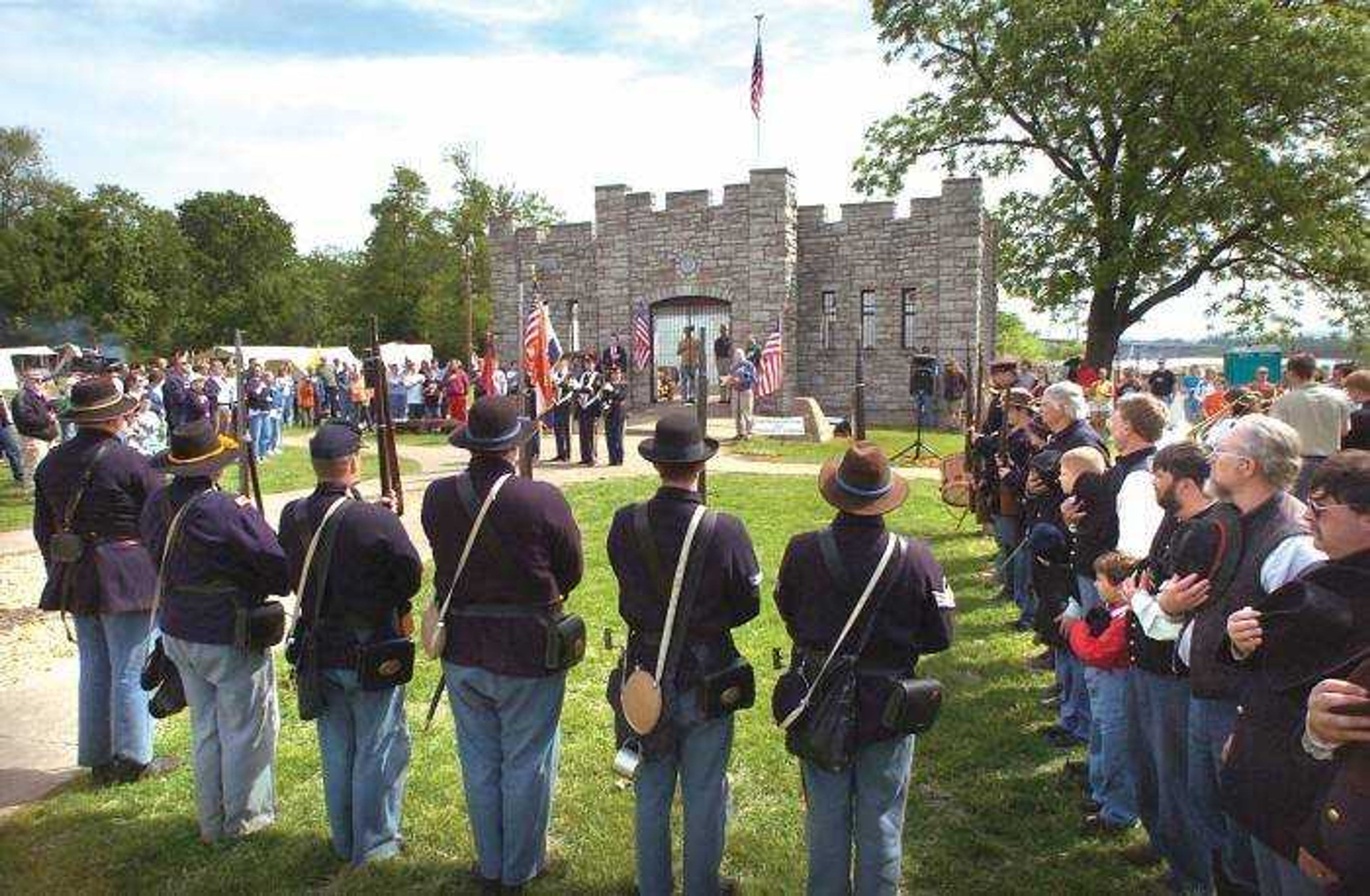War and remembrance
The smells of gunpowder and horse manure are what would have first greeted a visitor to Fort D during the Civil War. Those odors -- plus that of grilled bacon -- greeted spectators Saturday at Cape Girardeau's Fort D Days celebration, held at the union fort's original location just off of South Sprigg Street...
The smells of gunpowder and horse manure are what would have first greeted a visitor to Fort D during the Civil War. Those odors -- plus that of grilled bacon -- greeted spectators Saturday at Cape Girardeau's Fort D Days celebration, held at the union fort's original location just off of South Sprigg Street.
"This is what a camp would have looked like, and this is what it would have smelled like," said David Burns, an infantry re-enactor of the 17th Missouri Company G. "But we'd be lucky to get the potatoes, bacon and eggs we've got here. A lot of times infantrymen lived off of hardtack, a kind of unleavened bread that I'd compare to a dog biscuit. ... So, believe it or not, this is a luxury weekend."
Burns and approximately 30 other artillery, cavalry, infantry, engineering, medical and civilian re-enactors stick as closely as possible to the real thing. That means sleeping in canvas tents on straw bedding.
"We try to live the life of a soldier," Burns said. "But we're a little better off."
The event runs through 3 p.m. today. Attendance Saturday was steady throughout, and organizers estimated more than 1,000 people came to the free event.
The sense of realism is aided by the fact that soldiers have access to Fort D itself. The fort, which sits inside a triangle of earthen mounds, dates back to 1861. Fort D is one of only three earthen forts remaining in Missouri.
"This is particularly exciting because our ability as re-enactors to get onto an original site is extremely limited," said Roger Worman of Effingham, Ill. "I've been doing this for 19 years, and this is the fourth re-enactment I've ever done on an original site."
Worman said the National Parks Service will not allow weapons of any sort at locations it oversees, which hampers re-enactments.
Firing blanks into the air
But weapons abounded at the city-owned Fort D. Infantrymen gave youngsters the thrill of firing blanks into the air from .58-caliber replica muskets.
Artillerymen in blue coats and caps fired off three cannon salutes each hour from the hills overlooking the Mississippi River. This, said organizer Scott House, is exciting but not strictly authentic.
"That's one of the biggest myths. People think that the fort was here to protect against attacks from the river. The Union had the river secured all the way down to Cairo," House said. "It was in fact needed to protect against land attacks, so the cannons would have been facing the other direction."
Sometimes realism loses out to being practical.
"I think people wouldn't like it too much if we pointed the guns at their houses," he said.
The fort did not see any action during the Battle of Cape Girardeau, which took place April 26, 1863. In fact, no shots in anger have ever been fired from within its confines, but one re-enactor felt a direct connection to the conflict.
"My great-great-grandfather on my mother's side was stationed at Fort B in 1863," said re-enactor Randy Baehr of St. Louis. "He was in Company D, a second lieutenant, and would have had to have been there during the battle. It's interesting because my son graduated from SEMO in 2004 and he worked in the archives in the library. That's where Fort B would have been. So we kind of feel we have a family connection to it."
Baehr's ancestor survived the battle unharmed, but others weren't so lucky. The six Union soldiers who died during the four-hour artillery battle and the dozens wounded were the charge of the medical battalion.
Re-enactors at Fort D emulated techniques of Civil War medicine with prosthetics and fake blood.
"We had a soldier in here earlier who had pretty bad burns," said Raymond McMenomy, who wore a blood-splattered apron while deftly wielding scalpels and bone saws. "We had to amputate his thumb and scrape off the loose burnt skin all up his arm. I applied beeswax and water to serve as a salve and wrapped the area in cloth. It was still pretty painful. Usually we give them whiskey and inject them with morphine. But today we ran out of the morphine."
tgreaney@semissourian.com
335-6611, extension 245
Connect with the Southeast Missourian Newsroom:
For corrections to this story or other insights for the editor, click here. To submit a letter to the editor, click here. To learn about the Southeast Missourian’s AI Policy, click here.










